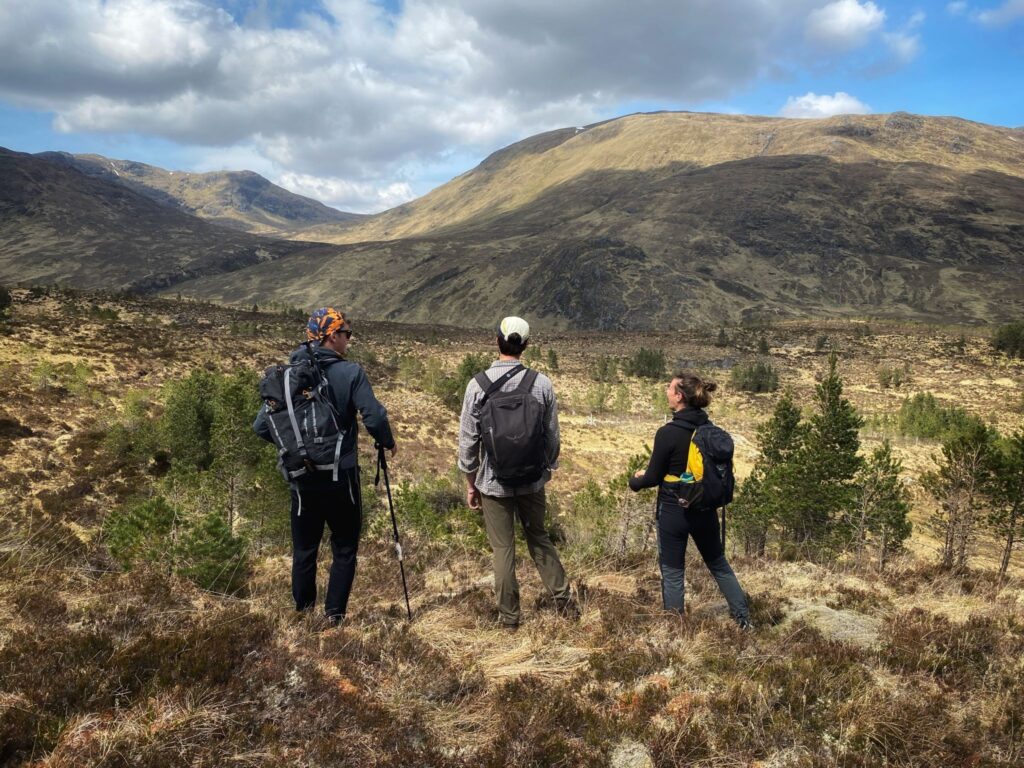People’s wellbeing is inextricably linked to the ecological health of the land where they live. In the heart of the Scottish Highlands, a progressive rewilding initiative is delivering diverse benefits for nature and local communities.

Rewilding offers new opportunities
Rewilding Europe’s latest addition to our portfolio of rewilding landscapes, the Affric Highlands, will help to upscale and amplify rewilding efforts across 200,000 hectares; from Glen Affric in the east to Glen Shiel in the west.
Driven forward by the pioneering conservation charity, Trees for Life, this central Highland region of Scotland stands to benefit enormously from an exciting new 30-year mission: habitats will be reconnected and lost or fragmented natural processes restored and revitalised, with community engagement central to their vision. It is a vision that seeks to re-establish a dynamic coast to coast natural landscape, where wildlife thrives, and people prosper.

Amplifying rewilding
A network of landowners and stakeholders are being connected, coalescing around the idea of recreating contiguous areas of habitat, containing re-wooded mountain sides and riverbanks, rewetted peatland and naturally flowing rivers. By the beginning of 2023, Affric Highlands will also have its very own Rewilding Centre, built at Trees for Life’s flagship 4,000-hectare estate, Dundreggan. It will engage a wider audience with rewilding through educational tools and trails leading from the centre into rewilding habitat.
The Affric Highlands is setting out to demonstrate that stronger ecosystems can create stronger local economies through, for instance, nature tourism and other nature-based enterprise.

A catalyst for nature
For Affric Highlands’ Team Leader, Stephanie Kiel, there is great scope for habitat regeneration and wildlife comeback. “The potential for nature recovery within Affric Highlands is enormous. Repairing our peatlands is a priority for the climate emergency and can restore some of our most ecologically valuable land. Woodland creation by natural regeneration and where needed, tree planting, can create diverse habitats for countless animal species; from red squirrels and red deer, to capercaillie, wildcat and golden eagle.” From the banks of Loch Ness on the east coast to Loch Alsh on the west coast, a large, connected corridor will be created.

A growing network
Work is underway to enable this ecological recovery with 20 landowners already on board and more registering their interest. Field visits to different private estates are being conducted to assess each site’s rewilding potential. The natural regeneration of woodland is a key long-term goal.
In partnership with the James Hutton Institute and local Deer Management Groups, sophisticated modelling software is being developed to better inform how any changes in the land and deer management affect the population and distribution of red deer, enabling better decisions to be made between stakeholders across the landscape. As with many rewilding initiatives in human-modified landscapes, a degree of intervention is often required during the first stage before stepping back and letting nature lead.

Rewilding hearts and minds
But restoring ecological connections is only one part of the Affric Highlands story. Connecting people to this is the other part, as Stephanie explains: “The people and communities within the Affric Highlands area are at the core of the initiative and we are currently setting up a youth engagement project around Drumnadrochit and Fort Augustus. We want to increase the opportunities for young and old alike to experience the natural environment and to consider how nature can create new opportunities for people and their livelihoods.”
Opportunities that include providing financial rewards for ecosystem restoration, such as carbon sequestration, will become more commonplace – adding value to land through nature-based businesses. By combining ecological processes with economic outputs, community engagement with rewilding will flourish, winning over both the heart and the head to inspire more action on the ground – leading to an ecologically, economically and socially enriched future for the Affric Highlands.
Want to know more?
Much of this blog was taken from a story in the Rewilding Europe Annual Review 2021 entitled “The Affric Highlands”. A PDF of the full story can be downloaded here.
